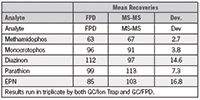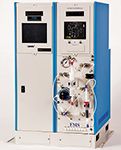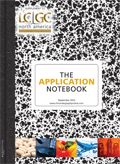Automated Multi-Cartridge Solid Phase Extraction of Phosphorus Containing Pesticides in Drinking Water
Organophosphate pesticides (OPPs) are widely used globally for agricultural pest control.
Organophosphate pesticides (OPPs) are widely used globally for agricultural pest control. Unlike chlorinated pesticides (OCPs), OPPs are less persistent in the environment but offer greater acute toxicity. Additionally, OPPs are highly water soluble which makes them of particular concern in municipal drinking water supplies.
Analytically, OPPs can pose some challenges due to the wide diversity of physical structures and behavioral characteristics of individual analytes. This often results in individual extraction protocols being implemented for labs to meet regulatory compliances. With the FMS, Inc. TurboTrace® ABN Multi Cartridge SPE system, and its ability to incorporate dual cartridge extractions, it is possible to pair analytes with dissimilar characteristics into a single, fully automated extraction process.
- FMS, Inc. TurboTrace® ABN multi-cartridge SPE system
- FMS, Inc. SuperVap® 12 Concentrator
- FMS, Inc. 50 mL direct to vial concentrator tubes
- Thermo Trace Ultra GC with Polaris Q
- Agilent 7890 GC with FPD detector
Consumables
- FMS, Inc. 1 g C18 cartridges
- Restek Resprep 2 g coconut charcoal cartridges (Cat# 26032)
Sample Prep
1. Liter drinking water samples were spiked with target analytes of interest.
2. 1 mL of 6N HCl is added to each sample to bring the pH <2.
3. Sample bottles are fitted onto SPE extraction system
4. 1 g C18 cartridges (position #1) and coconut charcoal cartridges (position #2) fitted on SPE system.
SPE Procedure
1. SPE cartridges are pre-conditioned with 5 mL MeCl each
2. SPE Cartridges are pre-conditioned with 10 mL MeOH each
3. SPE Cartridges are pre-conditioned with 20 mL H2O each
4. Samples are loaded across cartridge at a 20 mL/min rate via vacuum
5. SPE cartridges are Nitrogen dried for 10 min to remove excess water.
6. DVB cartridge eluted with 5 mL EtAC.
7. Sample containers are rinsed with 15 mL MeCl and eluted though DVB cartridge (10 mL/min).
8. 5 mL additional MeCl eluted through the C18 cartridge.
9. Coconut charcoal cartridges eluted with 15 mL MeCl.
10. Residual water removed by NaSO4 in-line cartridge filtration and eluate emptied directly into Super Vap concentrator tubes.
SuperVap
1. Preheat temp: 20 min at 60 °C
2. Evap. mode w/sensor temp: 60 °C
3. Nitrogen pressure: 10 psi
4. Samples reduced to 1 mL
5. Samples reduced to 1mL final volume

Conclusions
Extraction of the drinking water samples on the Turbo Trace ABN system enabled a fully automated extraction process due to its dual cartridge capabilities. Samples were loaded simultaneously across the C18 and coconut charcoal cartridges in succession. Cartridges were then able to be eluted independently with no manual transferring or handling of cartridges. Elutions then could be either independently fractionated for individual analysis, or combined for a single GC run by utilizing the system's 3 fraction lines.

FMS Inc. Turbo Trace ABN Multi cartridge system.
Analysis of water extracts showed consistent instrumental performance by both GC–MS-MS and GC–FPD detection. Recoveries for C18 bonding pesticides displayed excellent precision with all falling between 80–120%. Methamidophos consistently recovered >60% from the coconut charcoal cartridge when using 1 L samples. Higher recoveries were observed when using reduced sample volumes indicating 2 g coconut charcoal cartridges were better suited for samples ≤500 mL.

FMS, Inc.
580 Pleasant Street, Watertown, MA 02472
tel. (617) 393-2396, fax (617) 393-0194
Website: www.fms-inc.com

Separation of Ultra-Short and Long Chain PFAS Compounds Using a Positive Charge Surface Column
December 11th 2024A separation of ultra-short and long chain PFAS (C1-C18) is performed on a HALO®PCS Phenyl-Hexyl column along with a HALO®PFAS Delay column which demonstrates excellent retention for both hydrophilic and hydrophobic analytes.















